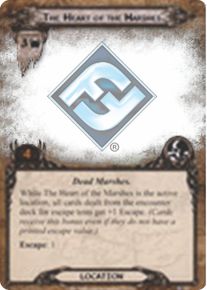

If Elf-stone is attached to active location and Long-Defeat to current quest, and... players explore all (active location and quest , advancing to the next quest card), what happens? what is first? Can you draw 2 cards by Long Defeat and after put into play one of them (if it is ally)?

